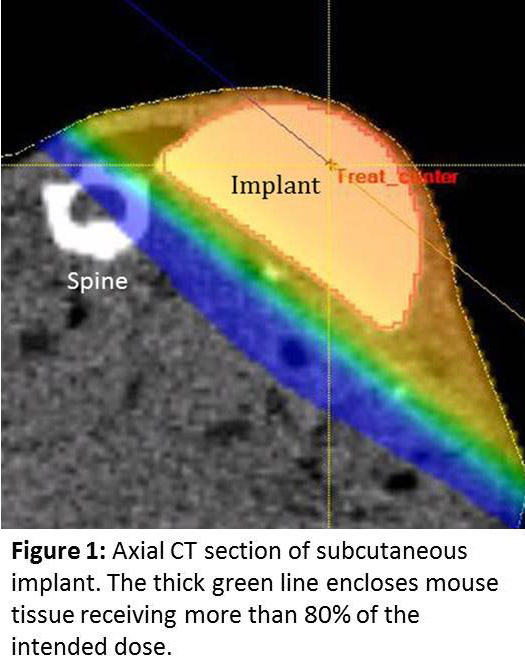|
|
|
|
|
Back to 2014 Annual Meeting Abstracts
A Novel Animal Model for Studying Peri-Prosthetic Capsule Formation
Adam Jacoby, BA, Rachel C. Hooper, MD, Jeho Jeong, Phd, Kadria N. Derrick, MD, Ope Asanbe, MD, Arielle Sasson, Hector L. Osoria, BS, Tarek Elshazly, BA, Pat B. Zanzonico, Phd, Jason A. Spector, MD, FACS.
Weill Cornell Medical College, New York, NY, USA.
BACKGROUND:Capsular contracture around breast implants affects 15-45% of patients undergoing breast augmentation and an even higher proportion of patients undergoing breast reconstruction after mastectomy receiving concomitant radiation therapy. The mechanism behind this fibroproliferative phenomenon has not been elucidated as animal studies have yet to adequately mimic the modern, complex delivery of therapeutic irradiation to human patients. Namely, previous irradiation protocols have failed to precisely account for the contours created by silicone implants. Here, we describe an animal model to evaluate radiation-induced capsular contracture around a silicone implant utilizing a novel model of precise image-guided radiation therapy designed specifically for small animals.
METHODS:Round custom-made silicone implants (300 mg) were fabricated and subcutaneously implanted onto the dorsa of wild type (C57BL6) mice. A subset of mice underwent imaging via a Precision X-Rad 225Cx (Branford, CT) small animal image guided irradiating system. Based on the acquired CT image, a 3D treatment planning system (Metropolis; Memorial Sloan Kettering Cancer Center, NY) was then used to formulate a plan to deliver a 10-Gy dose of irradiation to the implant and tissues immediately surrounding the implant (See Figure 1).
RESULTS:To deliver a uniform dose of 10-Gy to the target, a treatment plan with two opposed tangential beams of a 10×10- mm^2 square collimator was generated for each implant. The 3D dose distribution evaluated with Metropolis revealed that the target volume (.9 cm^3) received a fairly uniform dose of 10-Gy, while minimizing the radiation dose to vital structures including the spine, heart, and lungs. The average dose to the implant was 9.6 Gy and 95% of the implant volume received more than 9.0 Gy.
CONCLUSIONS:Using novel image-guided software based on human radiation protocols, we have developed a method to deliver a targeted dose of irradiation directed specifically around custom designed implants and immediate peri-prosthethic tissues in a small animal model.
This novel method more accurately mimics human therapeutic radiation protocols, allowing us to investigate and potentially better understand the mechanisms behind peri-prosthetic capsular contracture.

Back to 2014 Annual Meeting Abstracts
|
|




